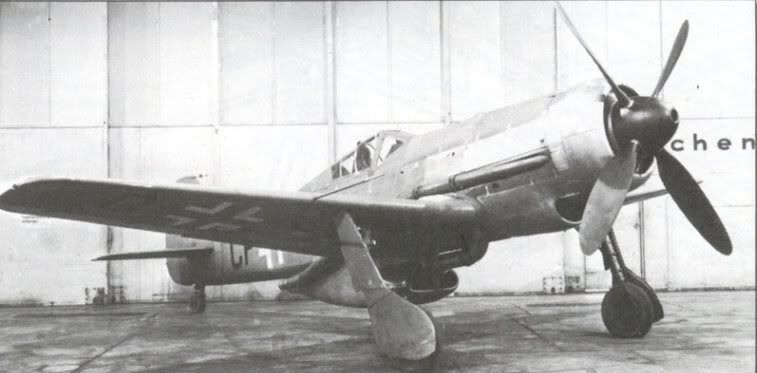


The FW 190 V18 was designed and built as a prototype for the high-altitude FW 190 C, and in V18/U1 form it had the DB 603 A engine driving a four-bladed propeller. The FW 190 C was a projected high-altitude fighter that never came to fruition; even so five prototypes were completed, the FW 190 V18, V29, V30, V32 and V33. Each of these aircraft had DB 603 inline engines, annular radiators, Hirth 9-2281 turbochargers and four-bladed propellers. The FW 190 V18 was coded CF + OY and received a white outline Balkenkreuz and Hakenkreuz. By 1944 the project had been halted by technical problems and opposition to use of the DB 603 (which was needed for other aircraft types).
V18 (W.Nr 0040) was previously used in the Hohenjager programme, and with its huge belly mounted turbo-supercharger, was nicknamed "Kangaroo".
This project came to nothing, and it was decided to convert the airframe to Ta 152H standard as part of the H-series prototype "family", but it only left the prototype shop as series production was starting, and was not used in any testing. It was used instead for pilot familiarisation, and a new wooden tail was fitted after damage sustained in a take off crash on on 23rd December 1944. (Incidentally, Ta 152H series production started after the prototypes had made just 30 hours and 52 minutes of test flights in total!)
A very intresting looking Fw-190. The bottom reminds me of the Mustang, wonder if that is where they got the Idea? Most info found through out the internet.